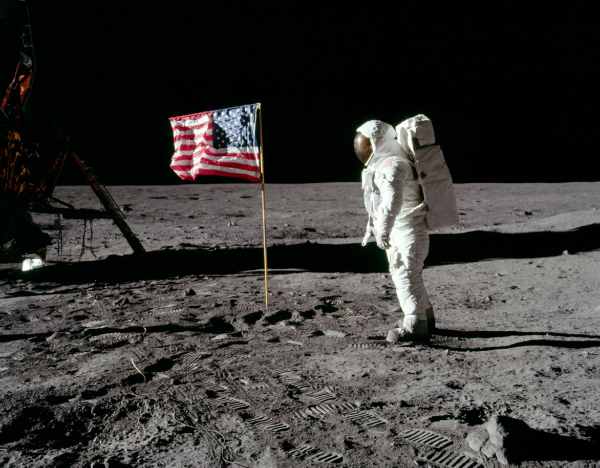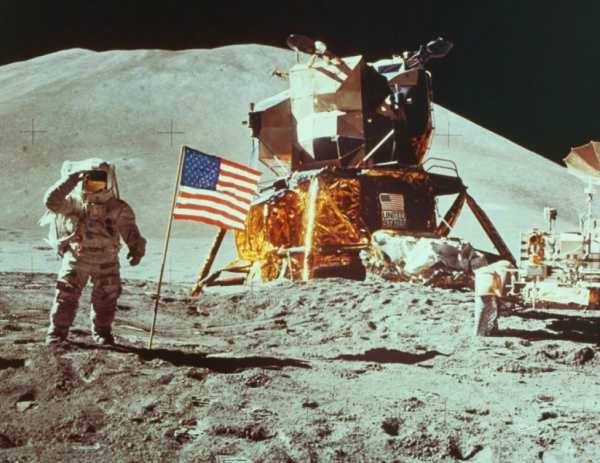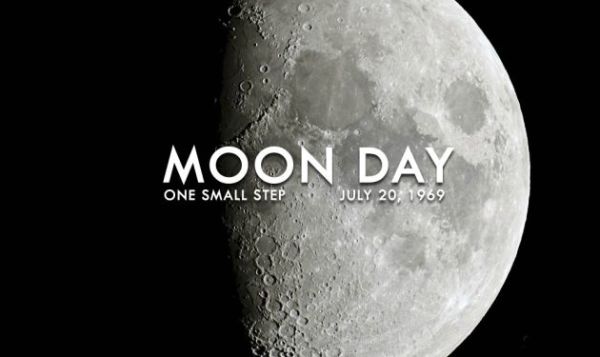Moon Day 2020 – july 21 moon day speech: July 20 is the day to celebrate National Moon Day. On the occasion of National Moon Day we honor the man who stepped first on the moon in the year 1969. NASA (National Aeronautics and Space Administration) said, stepping on the Moon is considered as the greatest technological achievement of all time. Neil Armstrong and Buzz Aldrin became the first humans to land on the Moon on July 20, 1969 in their spacecraft Apollo 11. Lets see chandra dinam speech, , chandra dinam malayalam essay, chandra dinam speech malayalam & moon day speech for class 1, 2, 3, 4, 5, 6, 7, 8, 9 ,10, 11, 12. Happy Moon day !
Malayalam: എല്ലാ വർഷവും ജൂലായ് 20 നാണ് ദേശീയ ചന്ദ്രൻ ആഘോഷിക്കുന്നത്. 1969 ൽ ചന്ദ്രനിൽ നടന്ന ആദ്യത്തെ മനുഷ്യനെ ആദരിച്ചു. നാസ (National Aeronautics and Space Administration) പറഞ്ഞു, “ചന്ദ്രനിലെ സമയത്തെല്ലാം ഏറ്റവും മികച്ച സാങ്കേതിക നേട്ടമാണ് നാസ. 1969 ജൂലൈ 20 ന് അപ്പോളോ 11 അമേരിക്കയിലെ നീൽ ആംസ്ട്രോങ്, ബസ് ആൽഡ്രിൻ എന്നിവർ ചന്ദ്രനിൽ ഇറങ്ങി.
Chandra Dinam Speech in Malayalam
moon day speech in Malayalam – moon day speech Malayalam:
ജൂലൈ 20 – ചന്ദ്രദിനം. ചന്ദ്രദിനത്തെ കുറിച്ചുള്ള ഇന്നലെ രാത്രിയോടെ മാത്രം പൂര്ണ്ണ രൂപത്തില് ലഭിച്ച ഈ പോസ്റ്റിനു വേണ്ട വസ്തുതകള് ശേഖരിക്കുകയും അതിന് സഹായകമായ വീഡിയോ സംയോജിപ്പിച്ചു നല്കുകയും ചെയ്തത് ഒരു പ്ലസ് വണ് വിദ്യാര്ത്ഥിയാണ്. കണ്ണൂര് മമ്പറം ഹയര് സെക്കന്ററി സ്കൂളിലെ അമല്രാഗ്. ഹൈസ്കൂള് ക്ലാസുകളില് വച്ചു തന്നെ വെബ് പേജ് ഡിസൈനിംഗില് ജില്ലാ,ഉപജില്ലാ തലങ്ങളില് അമല്രാഗ് പങ്കെടുത്തിട്ടുണ്ട്. ഈ വീഡിയോ സ്കൂളുകളില് പ്രദര്ശിപ്പിക്കാനാകുമോ എന്ന ചോദ്യമാണ് അമലിന്റെ മെയിലില് ഉണ്ടായിരുന്നത്. പര്യവ്യവേഷണം പോലുള്ള മേഖലകളില് താല്പര്യം തോന്നുന്ന കുട്ടികള് തങ്ങളുടെ ഇഷ്ടം മറ്റു കുട്ടികളിലേക്കും എത്തിക്കണമെന്ന് ആഗ്രഹിക്കുമ്പോള് മാത്സ് ബ്ലോഗിനൊപ്പം അധ്യാപകര് തങ്ങളാല് കഴിയും വിധം അതിനെ പ്രത്സാഹിപ്പിക്കേണ്ടതുണ്ട്. ചന്ദ്ര ദിനത്തെ കുറിച്ചുള്ള എന്തെല്ലാം അറിവുകളാണ് അമല് ശേഖരിച്ച് അയച്ചു തന്നതെന്നറിയണ്ടേ ?
ചന്ദ്രന് ഭൂമിയുടെ ഒരേയൊരു പ്രകൃതിദത്ത ഉപഗ്രഹമാണ് ചന്ദ്രന്. ഭൂമിയില് നിന്ന് ശരാശരി 3,84,403 കിലോമീറ്റര് ദൂരെയാണ് ചന്ദ്രന് സ്ഥിതി ചെയ്യുന്നത്; ഭൂമിയുടെ വ്യാസത്തിന്റെ ഏകദേശം മുപ്പത് മടങ്ങ് വരും ഈ ദൂരം. ഭൂമിയും ചന്ദ്രനുമടങ്ങുന്ന വ്യൂഹത്തിന്റെ പിണ്ഡ കേന്ദ്രം ഭൂമിയുടെ വ്യാസാര്ദ്ധത്തിന്റെ ഏകദേശം നാലിലൊന്നു വരുന്ന 1,700 കി.മീ ആഴത്തില് ഭൂമിയുടെ ഉപരിതലത്തിനു താഴെ സ്ഥിതിചെയ്യുന്നു. ഭൂമിക്ക് ചുറ്റും ഒരു തവണ പ്രദക്ഷിണം ചെയ്യാന് ചന്ദ്രന് 27.3 ദിവസങ്ങള് വേണം. ആദ്യമായി ചന്ദ്രോപരിതലം സ്പര്ശിച്ച മനുഷ്യനിര്മിത വസ്തു ലൂണ 2 ആണ്. 1959-ല് ഈ വാഹനം ചന്ദ്രോപരിതലത്തില് വന്നിടിച്ച് തകരുകയാണുണ്ടായത്. ഇതേ വര്ഷം തന്നെ മറ്റൊരു മനുഷ്യ നിര്മിത ശൂന്യാകാശയാനമായ ലൂണ 3 ചന്ദ്രന്റെ ഭൂമിക്ക് അഭിമുഖമല്ലാത്ത മറുവശത്തിന്റെ ചിത്രം എടുക്കുന്നതില് വിജയിച്ചു. വിജയകരവും അപകടരഹിതവുമായി ചന്ദ്രോപരിതലത്തില് ഇറങ്ങിയ യാനം എന്ന ബഹുമതി 1966-ല് ചന്ദ്രനിലിറങ്ങിയ ലൂണ 9-ന് അവകാശപ്പെട്ടതാണ്. മനുഷ്യനെ വഹിച്ചു കൊണ്ടുള്ള ആദ്യത്തെ ചന്ദ്രയാത്ര അപ്പോളോ 8 എന്ന യാനം നിര്വഹിച്ചെങ്കിലും മനുഷ്യന് കാലുകുത്താന് കഴിഞ്ഞിരുന്നില്ല.
ആദ്യമായി മനുഷ്യന് ചന്ദ്രനില് വിജയകരമായി കാലു കുത്തിയത് 1969-ല് അപ്പോളോ 11 എന്ന ശൂന്യാകാശയാനത്തിലാണ്. ഭൂമിക്ക് പുറത്ത് മനുഷ്യന് ചെന്നെത്തിയിട്ടുള്ള ഒരേയൊരു ശൂന്യാകാശഗോളം ചന്ദ്രനാണ്. ചാന്ദ്രപര്യവേഷണങ്ങള് മനുഷ്യനെ ചന്ദ്രനിലിറക്കാന് ആരംഭിച്ച യജ്ഞം അമേരിക്കയുടെ ശൂന്യാകാശഗവേഷണ കേന്ദ്രമായ നാസയുടെ 1967-ല് ആരംഭിച്ച അപ്പോളോ -1 ദൗത്യം ആയിരുന്നു. 1967 ജനുവരി 27 ന് തുടങ്ങിയ അപ്പോളോ -1 ദുരന്തമായിത്തീര്ന്നു. പേടകത്തിന് തീപിടിച്ച് യാത്രികര് മൂന്നുപേരും മരിച്ചു. എന്നാല് അപ്പോളോ 4 മുതലുള്ള പരീക്ഷണങ്ങള് വിജയകരമായിരുന്നു. 1969-ല് ചന്ദ്രനില് മനുഷ്യനെ ഇറക്കുന്നതില് അമേരിക്ക വിജയിച്ചു. നീല് ആംസ്ട്രോങ് ചന്ദ്രനില് ഇറങ്ങിയ ആദ്യ മനുഷ്യനായി. 1969 ജൂലൈ 21-ആം തിയതി ചന്ദ്രനില് ഇറങ്ങിയ അപ്പോളോ-11 എന്ന ബഹിരാകാശയാനത്തിന്റെ കമാണ്ടര് ആയിരുന്നു അദ്ദേഹം. എഡ്വിന് ആല്ഡ്രിന് അദ്ദേഹത്തോടൊപ്പം, ചന്ദ്രനിലിറങ്ങി. ആദ്യമായി ചന്ദ്രനില് കാല് വച്ചശേഷം നീല് ആംസ്ട്രോങ് ഇങ്ങനെ പറഞ്ഞു ” ഒരു മനുഷ്യനെ സംബന്ധിച്ചിടത്തോളം വളരെ ചെറിയ ഒരു ചുവടുവയ്പ്, പക്ഷേ മനുഷ്യരാശിക്ക് ഇതൊരു വന് കുതിച്ചു ചാട്ടമാണ് ”
അപ്പോളോ പരമ്പരയിലെ ആറ് വിക്ഷേപണങ്ങളില് നിന്നായി പന്ത്രണ്ട് പേര് ചന്ദ്രനില് ഇറങ്ങിയിട്ടുണ്ട്. അവര് ഹാരിസണ് ജാക്ക്സ്മിത്ത്, അലന് ബീന്, ചാള്സ് ദ്യൂക്ക് എഡ്ഗാര് മിച്ചല്, അലന് ഷെപ്പേര്ഡ്, ഡേവിഡ് സ്കോട്ട്, ജയിംസ് ഇര്വിന്, ജോണ് യങ്, ചാള്സ് കോണ്റാഡ്, യൂജിന് സര്ണാന് എന്നിവരാണ്. ഇതുവരെ ചന്ദ്രനില് ഏറ്റവും അവസാനം ഇറങ്ങിയത് അപ്പോളോ 17 എന്ന വാഹനത്തില് സഞ്ചരിച്ച്, 1972 ഡിസംബറില് ചന്ദ്രനില് കാലുകുത്തിയ യൂജിന് സെര്നാന് ആണ്. അതുവരെ അജ്ഞാതമായിരുന്ന ചന്ദ്രന്റെ മറുപുറത്തിന്റെ ചിത്രം ആദ്യമെടുത്തത് 1959-ല് റഷ്യന് പേടകമായ ലൂണ-3 ആണ്. ചന്ദ്രനില് നിന്ന് പല ദൌത്യങ്ങളിലായി പാറക്കഷണങ്ങള് ശാസ്ത്രജ്ഞര് ശേഖരിച്ചിട്ടുണ്ട്. അപ്പോളോ ദൌത്യങ്ങളുടെ ഭാഗമായി ഭൂകമ്പമാപിനികളും, റിഫ്ലക്റ്റീവ് പ്രിസങ്ങളും ഉള്പ്പെടെ പല ശാസ്ത്രീയ ഉപകരണങ്ങളും ചന്ദ്രനില് സ്ഥാപിച്ചിട്ടുണ്ട്. അതില് പലതും ഇന്നും പ്രവര്ത്തനനിരതമാണ്.
2004 ജനുവരി 14-ന് അമേരിക്കന് പ്രസിഡണ്ട് ജോര്ജ്ജ് ബുഷ്, 2020-ഓടെ അമേരിക്ക വീണ്ടും ചന്ദ്രനില് മനുഷ്യനെ ഇറക്കാനുള്ള ശ്രമങ്ങള് ചെയ്യും എന്ന് പ്രഖ്യാപിച്ചു. സമീപഭാവിയില് തന്നെ ചന്ദ്രനെ കുറിച്ചു കൂടുതല് പഠനങ്ങള് നടത്താന് യൂറോപ്യന് സ്പേസ് ഏജന്സിയും പദ്ധതി തയ്യാറാക്കുന്നു. ചൈനയുടെ ചാങ്-എ ചാന്ദ്രപദ്ധതിയിലെ ആദ്യ ബഹിരാകാശവാഹനമായ ചാങ്-എ 1 ഒക്ടോബര് 24 2007-ന് വിജയകരമായി വിക്ഷേപിച്ചു. 2020-ല് മനുഷ്യനെ ചന്ദ്രനിലെത്തിക്കുക എന്നതാണ് പദ്ധതിയുടെ പ്രഖ്യാപിതലക്ഷ്യം. 2007-ല് തന്നെ ജപ്പാന് ചാന്ദ്രവാഹനമായ സെലീന് വിക്ഷേപിച്ചു. ഇന്ത്യയുടെ ചാന്ദ്രഗവേഷണപദ്ധതിയാണ് ചാന്ദ്രയാന്. ഈ പദ്ധതിയിലെ ആദ്യ ബഹിരാഹാശവാഹനമായ ചാന്ദ്രയാന്-1 ഒക്ടോബര് 22 2008 ന് വിജയകരമായി വിക്ഷേപിച്ചു. പത്ത് മാസത്തെ പ്രവര്ത്തനത്തിനു ശേഷം ഓഗസ്റ്റ് 29 2009 ന് ബഹിരാകാശപേടകവുമായുള്ള ബന്ധം നഷ്ടപ്പെട്ടു. ചാന്ദ്രയാന്-2 2010-ലോ 2011-ലോ വിക്ഷേപിക്കാനാണ് ഐ.എസ്.ആര്.ഓ. ഉദ്ദേശിക്കുന്നത്. ഒരു റോബോട്ടിക് റോവര് ഈ പദ്ധതിയുടെ ഭാഗമായുണ്ടാകും. 2020 ആകുമ്പോഴേക്കും മനുഷ്യനെ ചന്ദ്രനിലെത്തിക്കാനുള്ള ആഗ്രഹം ഇന്ത്യ പ്രകടിപ്പിച്ചിട്ടുണ്ട്.

about moon day speech
Moon day speech
Lets see chandra dinam malayalam wikipedia, chandra dinam details in malayalam, chandra day in malayalam & chandra dinam malayalam notes, chandra dinam july 21 malayalam.
The moon is one of the. smallest of the heavenly bodies which can be seen from the earth. But it is the nearest to us, and on that account, with the exception of the sun, appears the target. The moon travels round the earth in a period of about one month, just as the earth goes round the sun in a day.
The earth, however, turns round upon its axis once every twenty-four hours, thus causing the alternation of day and night, whereas the moon takes a month to revolve on her axis, so that she always presents to us very nearly the same surface.
The moon has no light of her own like the sun and the stars, but shines by means of the reflected light of the sun. As the side which we see is not always that upon which the sun shines, her form appears to change and to grow larger and smaller.
In physical condition the moon differs widely from the earth. Even to the naked eye some peculiarities are obvious. If we attentively watch the full moon, we soon become familiar with its spotted surface, which never changes. From this the conclusion is drawn that it cannot be like that of the earth, which is often obscured by clouds and mist.
If we use the telescope, we find that all the details of the moon’s surface are hard and cold. There is no shade or delicate colouring, and nothing like mist or cloud has ever been seen. There seems to be nothing but bare rock and sand, or ice and snow, and there are no traces of vegetation or animal life.
The moon is a mass of mountains and extinct volcanoes. Several of the craters have a diameter of forty or fifty miles. One of them has a diameter of as much as seventy-eight miles.
Many have central cones closely resembling those in the volcanic regions of the earth. In some case the craters are filled nearly to the brim with lava. The volcanoes, however, seem to be all extinct. The mountains are extremely rugged in character, a feature that is mainly due to the absence of air and water.
On the earth the hills are rounded and moulded by the action of storms, by rain and snow; but as these agencies are absent from the moon, its mountains stand as rugged as when they were first formed millions of years ago.
The moon is of essential service to man. Combined with the sun, it exerts an attraction upon the earth which is the cause of the tides.
Tides are of great service to navigation. They carry vessels in and out of port and keep navigable many harbours which would otherwise become impossible owing to the silting up of the world’s work and not skulk in idleness.
Retribution comes to the idle in the shape of poverty, impaired health, enfeebled mind, loss of character and self-control, and damaged reputation.
Speech on moon day
moon landing day speech:
The moon is the only natural satellite of Earth. The moon orbits the Earth from 384,400 km and has an average speed of 3700 km per hour. It has a diameter of 3476 km, which is about ¼ that of the Earth.
The moon is the second brightest object in the sky after the sun. The gravitational forces between the Earth and the moon cause some interesting effects; tides are the most obvious. The moon has no atmosphere, but there is evidence that there may be water ice in some deep craters near the moon’s North and South Pole that are permanently shaded.
Most of the moon’s surface is covered with regality, which is a mixture of fine dust and rocky debris produced by meteor impact. There are two types of terrain on the moon. One is the heavily cratered and very old highland. The others are the relatively smooth younger craters that were flooded with molten lava.
Through the 19th and 20th centuries, visual exploration through powerful telescopes has fielded a fairly comprehensive picture of the visible side of the moon. The hitherto unseen far side of the moon was first revealed to the world in October 1959 through photographs made by the Soviet Lunik III spacecraft.
This photograph showed that the far side of die moon is similar to the near side except that large lunar Maria is absent. Craters arc now known to cover the entire moon, ranging in size from huge, ringed Maria to those of microscopic size. The entire moon has about 3 trillion craters larger than about 1 m in diameter.
The moon shows different phases as it moves along its orbit around the earth. Half the moon is always in sunlight, just as half the earth has day while the other half has night. The phases of the moon depend on how much of the sunlit half can be seen at any one time. In the new moon, the face is completely in shadow.
About a week later, the moon is in first quarter, resembling a half-circle; another week later, the full moon shows its fully lighted surface; a week afterward, in its last quarter, the moon appears as a half-circle again. The entire cycle is repeated each lunar month, which is approximately 29.5 days.
The moon is filling when it is farther away from the sun than the earth; it is new when it is closer. When it is more than half-illuminated, it is said to be in gibbous phase. The moon is when it progresses from full to new, and waxing as it proceeds again to full.
Temperatures on its surface are extreme, ranging from a maximum of 127° C (261° F) at lunar noon to a Minimum of-173° C (-279° F) just before lunar dawn. Just before the autumnal equinox on about September 23 during this season the moon rises at a point opposite to the sun, or close to the exact eastern point of die horizon.
Moreover the moon rises only a few minutes later each night, affording on several successive evenings an attractive moonrise close to sunset time and strong moonlight almost all night if the skis not clouded.
The continuance of the moonlight after sunset is useful to farmers in northern latitudes, who are then harvesting their crops. The full moon following the harvest m(X) n, which exhibits the same phenomena in a lesser degree, is called the hunter’s moon. A similar phenomenon to the harvest moon is observed in southern latitudes at the spring equinox on about March 21.

speech for moon day
Speech about moon day in Malayalam
Chandra Dinam 2020: This speech is for class 1, class 2, class 3, class 4, class 5, class 6, class 7, class 8, class 9, class 10, class 11 and contains essay, anuched, short paragraphs, pdf, wikipedia, Moon Day Posters, Composition, Paragraph, Articles, nibandh etc. Lets see , national moon day speech, chandra dinam speech, chandra dinam short essay in 100 words, 150 words, 200 words, 400 words which can be pdf downloaded in Malayalam, Hindi, Telugu language, Kannada, language, Tamil language, Urdu language & English language Font for class 1, class 2, class 3, class 4, class 5, class 6, class 7, class 8, class 9, class 10, class 11, class 12 students and collection of 2009, 2010, 2011, 2012, 2013, 2014, 2015, 2016, 2017 & 2020 are given below for FB, Whatsapp, & Instagram:
ചന്ദ്രൻ ഒന്നാണ്. ഭൂമിയിൽ നിന്നു മഞ്ഞു പൊഴിക്കുന്നതും ആകാശത്തു നിന്നു ഉപജീവനം കഴിക്കുന്നതും ആയിരിക്കും. പക്ഷെ അത് നമ്മോട് വളരെ അടുത്താണ്. അതിനപ്പുറം സൂര്യനെ കൂടാതെ, ലക്ഷ്യം കാണുന്നു. ഒരു ദിവസം സൂര്യൻ സൂര്യന് ചുറ്റും പോകുമ്പോൾ ഒരു മാസത്തോളം ചന്ദ്രൻ ഭൂമിയുടേതായി സഞ്ചരിക്കുന്നു.
ഭൂമിയെ അതിന്റെ ഇരുപതാം മണിക്കൂറുകളിൽ ഒരു പ്രാവശ്യം മാറിനിൽക്കുന്നു, അങ്ങനെ രാവും പകലും രാശി മാറുന്നു, ചന്ദ്രൻ ഒരു മാസമെങ്കിലും അതിന്റെ അച്ചുതണ്ടിൽ കറങ്ങാൻ ഒരു മാസമെടുക്കുന്നു, അങ്ങനെ അവൾ എല്ലായ്പ്പോഴും ഏതാണ്ട് ഒരേ ഒരു ഉപരിതലം .
ചന്ദ്രനും സൂര്യനും നക്ഷത്രങ്ങളും പോലെയല്ല, മറിച്ച് സൂര്യപ്രകാശത്തിന്റെ പ്രതിഫലനത്തിലൂടെ പ്രകാശിക്കുന്നു. നമ്മൾ കാണുന്ന പാർശ്വത്തിൽ എല്ലായ്പ്പോഴും സൂര്യൻ പ്രകാശിക്കുന്നു, അവളുടെ രൂപം മാറിക്കൊണ്ടിരിക്കുന്നു, വലുതും ചെറുതുമായിരിക്കും.
ശാരീരികാവസ്ഥയിൽ ചന്ദ്രനിൽ നിന്ന് ഭൂമിയിൽ നിന്ന് വ്യത്യാസമുണ്ട്. നഗ്നനേത്രങ്ങൾക്ക് പോലും ചില പ്രത്യേകതകൾ വ്യക്തമാണ്. പൂർണ്ണ ചന്ദ്രനെ നാം ശ്രദ്ധാപൂർവ്വം വീക്ഷിച്ചാൽ, നമ്മൾ പെട്ടെന്ന് പ്രത്യക്ഷപ്പെട്ട ഉപരിതലത്തിൽ പരിചയപ്പെടുന്നു, അത് ഒരിക്കലും മാറ്റമില്ലാത്തവയാണ്. ഇതിൽ നിന്നു തന്നെ, മേഘങ്ങളുടെയും, മൂടൽമഞ്ഞിന്റെയും പലപ്പോഴും അന്ധകാരം മൂലം, ഭൂമിയുടെ അത്രയും ആകരുത് എന്ന നിഗമനത്തിൽ എത്തിച്ചേരുന്നു.
നമുക്ക് ദൂരദർശിനി ഉപയോഗിച്ചാൽ, ചന്ദ്രന്റെ ഉപരിതല വിശദാംശങ്ങൾ എല്ലാം കഠിനവും തണുപ്പിക്കുന്നതുമാണ്. യാതൊരു തണൽ അല്ലെങ്കിൽ അതിലോലമായ നിറങ്ങളില്ല, ഒരിക്കലും മൂടൽമഞ്ഞും മേഘവും പോലെ കാണാനില്ല. മങ്ങിയ പാറയും മണൽ, ഹിമവും മഞ്ഞയും മാത്രമല്ലാതെ മറ്റൊന്നുമല്ല, സസ്യങ്ങളുടെയും ജീവജാലങ്ങളുടെയും ജീവനോടുകളില്ല.
ചന്ദ്രൻ പർവതങ്ങളും പിണ്ഡമുള്ള അഗ്നിപർവ്വതങ്ങളും ആണ്. പല ഗർത്തങ്ങളും നാൽപ്പത്, അമ്പതു മൈൽ വ്യാസമുള്ളവയാണ്. അവയിൽ ഒരു എഴുപത്തി എട്ട് മൈൽ നീളമുള്ള വ്യാസമുണ്ട്.
ഭൂമിയിലെ അഗ്നിപർവതപ്രദേശങ്ങളിലെ ആളുകൾക്ക് സാദൃശ്യം തോന്നുന്നു. ചില സന്ദർഭങ്ങളിൽ ഗർത്തങ്ങൾ ലാവയോടു ചേർന്ന് ചുറ്റിത്തിരിയുന്നവയാണ്. എന്നാൽ, അഗ്നിപർവ്വതങ്ങൾ എല്ലാം വംശനാശം സംഭവിക്കുന്നു. ആകാശവും ജലവും അഭാവം മൂലം ഒരു പ്രത്യേക സവിശേഷതയായി മലകൾ വളരെ അമൂല്യമായ ഒന്നാണ്.
മഴ പെയ്യുന്ന മഴ, മഞ്ഞ് മൂലം ചുറ്റുമുള്ള കുന്നുകൾ, ചുറ്റുപാടിന് ചുറ്റും കുന്നുകൾ ഉണ്ടാകും. എന്നാൽ, ഈ ഏജൻസികൾ ചന്ദ്രനിൽ നിന്ന് വിട്ടുപോവുകയാണെങ്കിൽ, ദശലക്ഷം വർഷങ്ങൾക്ക് മുൻപ് രൂപംകൊണ്ടതുപോലെ അതിന്റെ പർവ്വതങ്ങൾ പരുങ്ങലായി നിലകൊള്ളുന്നു.
മനുഷ്യൻ ചന്ദ്രനു് അത്യന്താപേക്ഷിതമാണ്. സൂര്യനൊപ്പം കൂടിച്ചേർന്നാൽ, അത് വേലിയേറ്റത്തിന് കാരണം ഭൂമിയിലെ ആകർഷണമാണ്.
ട്രയിഡുകൾ നാവിഗേഷൻ ചെയ്യാൻ വലിയ സേവനമാണ്. തുറമുഖങ്ങളിൽ നിന്ന് പുറത്തേക്കും പാത്രങ്ങളിലേക്കും അവർ കൊണ്ടുപോവുകയും, ലോകത്തിന്റെ പ്രവർത്തനത്തെ നിശ്ശബ്ദമാക്കുകയും, അസന്തുഷ്ടിയിൽ ഒതുങ്ങാതിരിക്കുകയും ചെയ്യുന്നതുകൊണ്ട് പല തുറമുഖങ്ങളും നന്നാക്കുകയും ചെയ്യുന്നു.
ദാരിദ്ര്യം, ദുർബല ആരോഗ്യം, കരുതാത്ത മനോഭാവം, സ്വഭാവം, ആത്മനിയന്ത്രണം, തകർന്ന പ്രശസ്തി എന്നിവയുടെ രൂപത്തിൽ അപകീർത്തിപ്പെടുത്തുന്നു.







